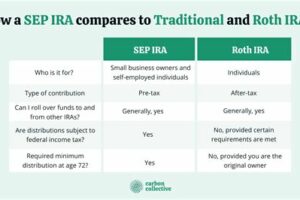Discover the top farming states in the US! From California to Iowa, find out which states offer the best conditions for successful agriculture.
Are you considering starting a farming business or looking to relocate to a state that is best for agriculture? Look no further! The United States has an abundance of states that are ideal for farming. From the rolling hills of the Midwest to the sunny fields of the South, there are plenty of options to choose from. Moreover, each state offers unique benefits and challenges for farmers. So, let’s dive into a few states that are known for their rich soil, favorable climate, and supportive agricultural policies.
When it comes to farming, there are a multitude of factors that can determine the success of a farm. From fertile soil to access to water, weather patterns, and even the availability of livestock opportunities, each state offers a unique set of advantages for farmers. In this deep dive into the best states for farming, we will explore which states offer the most fertile soil, crop diversity, access to water, optimal weather patterns, livestock opportunities, accessible infrastructure, highest crop yields, agricultural education, profitable farmers’ markets, and eco-friendly farming practices.
Fertile soil is crucial for profitable farming, and some states have more nutrient-rich soil than others. The top states for fertile soil include California, Illinois, Iowa, and Nebraska. These states have some of the most productive farmland in the country, with soil that is rich in nutrients and ideal for growing crops.
Crop diversity is another important factor for successful farming. The states with the most diverse options for farming include California, Texas, and Florida. These states offer a wide range of crops, from citrus fruits and nuts to vegetables and grains, allowing farmers to diversify their crops and maximize profits.
Access to water is also essential for farming, and some states have prime water access for irrigation and other farming needs. The top states for water access include California, Colorado, and Nebraska. These states have ample access to water sources, including rivers, lakes, and aquifers, which allows for efficient irrigation and optimal crop growth.
Weather patterns can greatly impact crop production and farming profitability. The states that experience the best weather for optimal farming production include California, Arizona, and Texas. These states have mild winters and long growing seasons, allowing for multiple harvests and higher crop yields.
Livestock opportunities are abundant in certain states, making them ideal for raising cattle, poultry, and other livestock. The best states for livestock opportunities include Texas, Nebraska, and Kansas. These states have vast amounts of grazing land and offer favorable weather conditions for animal husbandry.
Infrastructure is another important factor for successful farming. Accessible farms and efficient transportation systems make it easier to get products to market and increase profitability. States with accessible infrastructure for farming include Illinois, Iowa, and Nebraska. These states have well-developed transportation systems and are home to some of the largest agricultural companies in the country.
Crop yields are a major indicator of farming profitability, and some states consistently produce higher crop yields than others. The states with the highest crop yields and most profitable farming opportunities include California, Iowa, and Illinois. These states have fertile soil, diverse crops, and optimal weather patterns, making them ideal for high-yield farming.
Agricultural education is crucial for the advancement of farming practices and techniques. The best states for agricultural learning and advancement include California, Indiana, and Iowa. These states have top-tier agricultural universities and research centers, offering farmers the latest knowledge and technology for efficient and sustainable farming.
Farmers’ markets can provide small farming businesses with profitable opportunities to sell their products directly to consumers. The states that offer the most profitable farmers’ markets include California, New York, and Oregon. These states have thriving farmers’ markets that attract large numbers of consumers seeking fresh and locally-sourced produce.
Finally, environmental stewardship is becoming increasingly important in the farming industry. States that offer more eco-friendly farming and agricultural practices include California, Vermont, and Oregon. These states prioritize sustainable farming practices and offer incentives for farmers to adopt environmentally-friendly techniques.
In conclusion, each state offers unique advantages for farming, whether it be fertile soil, crop diversity, access to water, optimal weather patterns, livestock opportunities, accessible infrastructure, high crop yields, agricultural education, profitable farmers’ markets, or eco-friendly farming practices. Farmers should carefully consider these factors when deciding on a location to start or expand their farming business.
As a farmer, choosing the right state for your farming activities is crucial. Factors such as weather conditions, soil quality, and government policies can significantly affect your agricultural production. Based on these factors, here are the top ten states that are best for farming:
- Iowa
- Minnesota
- Nebraska
- North Dakota
- South Dakota
- Kansas
- Indiana
- Illinois
- Missouri
- Wisconsin
From the above list, Iowa stands out as the best state for farming. The state has a favorable climate, fertile soil, and supportive government policies that promote agricultural activities. Additionally, Iowa is home to some of the largest agricultural companies in the world.
Minnesota and Nebraska follow closely behind Iowa in terms of suitability for farming. Both states have favorable weather conditions and fertile soils that can support a wide range of crops and livestock. Additionally, these states have a supportive government that offers subsidies and other forms of assistance to farmers.
North and South Dakota are also ideal states for farming, particularly for the production of grain crops. These states have vast acres of farmland, which offer opportunities for large-scale agricultural operations.
On the other hand, states such as California and Florida, which are known for their warm temperatures, are not the best for farming due to high land prices, water scarcity, and strict government regulations.
In conclusion, as a farmer, it’s essential to conduct thorough research before settling on a particular state for your farming activities. Consider factors such as climate, soil quality, government policies, and access to markets to determine which state is best for your operations.
Dear visitors,We hope you found our article on the best states for farming informative and helpful. As you now know, there are many factors to consider when choosing a location for your farm, from soil quality to climate to market demand. While some states may be better suited for certain types of crops or livestock than others, there are many states across the country that offer fertile land, supportive communities, and promising opportunities for agriculture.One of the key takeaways from our research is the importance of finding a state that aligns with your specific goals and needs as a farmer. For example, if you are interested in organic farming, you may want to consider states like California, Vermont, or Oregon, which have robust organic markets and favorable policies for sustainable agriculture. On the other hand, if you are looking to raise livestock, states like Texas, Iowa, or Nebraska may be more suitable due to their vast grasslands and abundant feed resources.Of course, there are many other factors to consider when choosing a state for farming, such as access to water, transportation infrastructure, and labor availability. Ultimately, the decision will depend on your individual circumstances and preferences. However, we hope that our article has provided you with a useful starting point for your research and exploration.Thank you for visiting our blog and taking the time to read our article. We wish you all the best in your farming endeavors, and we welcome any feedback or questions you may have. Happy farming!.
Aspiring farmers often wonder which states are best for farming. Here are some of the most common questions people ask about this topic:
What are the top states for agriculture?
According to the United States Department of Agriculture (USDA), the top states for agriculture are California, Iowa, Nebraska, Texas, and Minnesota. These states have the largest agricultural economies and produce a wide variety of crops and livestock.
Which states have the most farmland?
Texas, Montana, and Wyoming have the most farmland in terms of acreage, while California, Iowa, and Illinois have the most farms. It’s important to note that having a lot of farmland doesn’t necessarily mean it’s good for farming, as factors like soil quality and climate also play a role.
What are the best states for organic farming?
California, Washington, and Oregon are considered the best states for organic farming due to their favorable climates and strong demand for organic products. These states also have supportive policies and programs for organic farmers.
Which states are best for livestock farming?
Texas, Iowa, and Nebraska are the top states for livestock farming, particularly for beef and pork production. These states have large feedlots and processing facilities, as well as abundant grazing land for cattle.
What are the best states for small-scale farming?
Vermont, Maine, and New Hampshire are considered the best states for small-scale farming due to their supportive policies for small farmers and strong local food movements. These states have thriving farmers markets and community-supported agriculture (CSA) programs.
Ultimately, the best state for farming depends on a variety of factors, including climate, soil quality, water availability, and market demand. It’s important for aspiring farmers to research and visit different areas before deciding where to start their farm.






